52 Weeks of Historical How-To’s, Week 17: How to Pack for Active Service
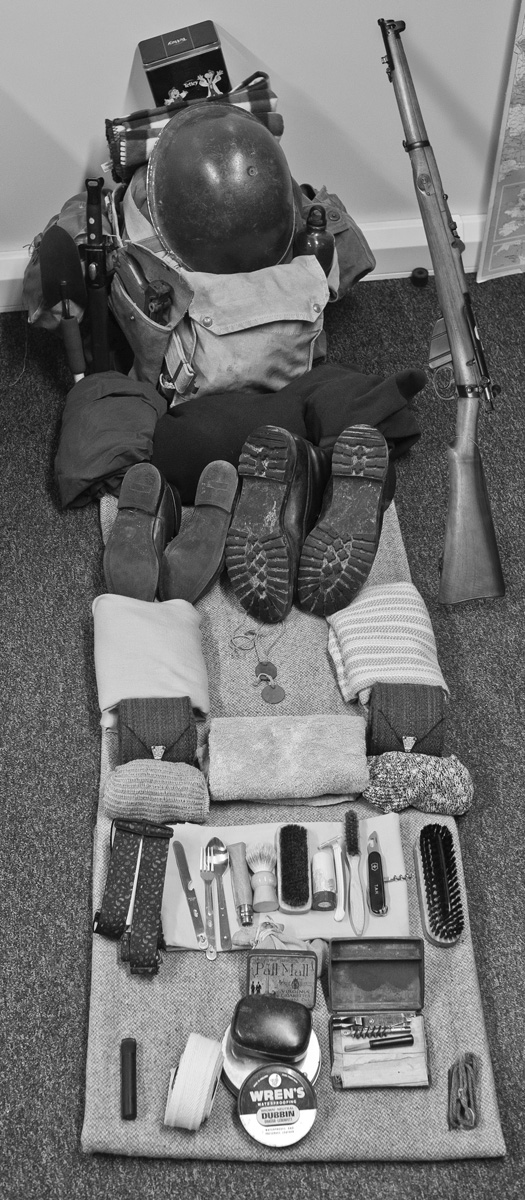
This week we have tried to bring together the kit that a soldier would have carried to the front on active service in World War I. Not authentic memorabilia, you understand, but as good as we could gather in the limited time available to us, to supplement original items from our collections. We found in the papers of Lt-Col Henry Alford an undated draft statement of advice on what to take on active service and how to pack, written by a seasoned campaigner for a junior officer (ms36014/9). There was also a photograph of a WWI soldier’s pack laid out for inspection.
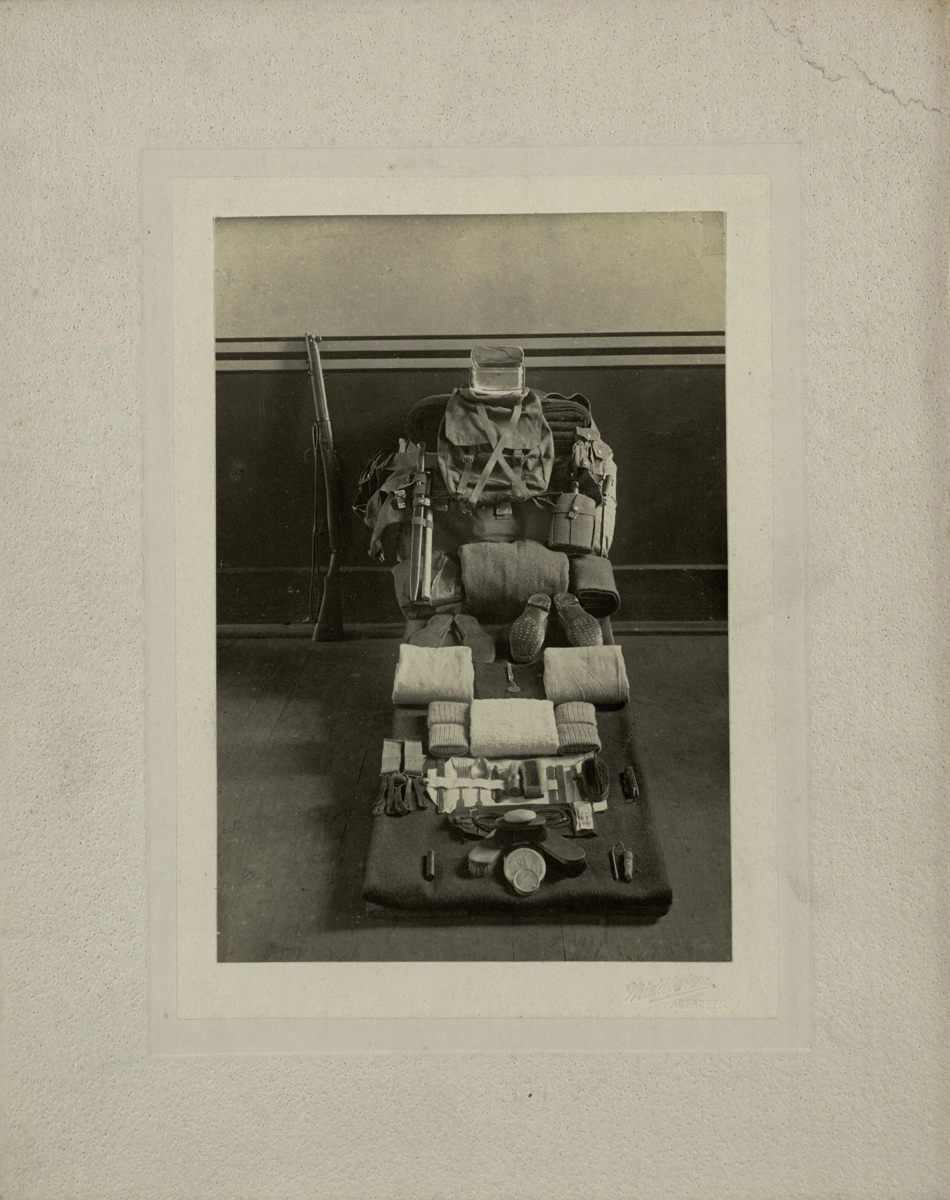
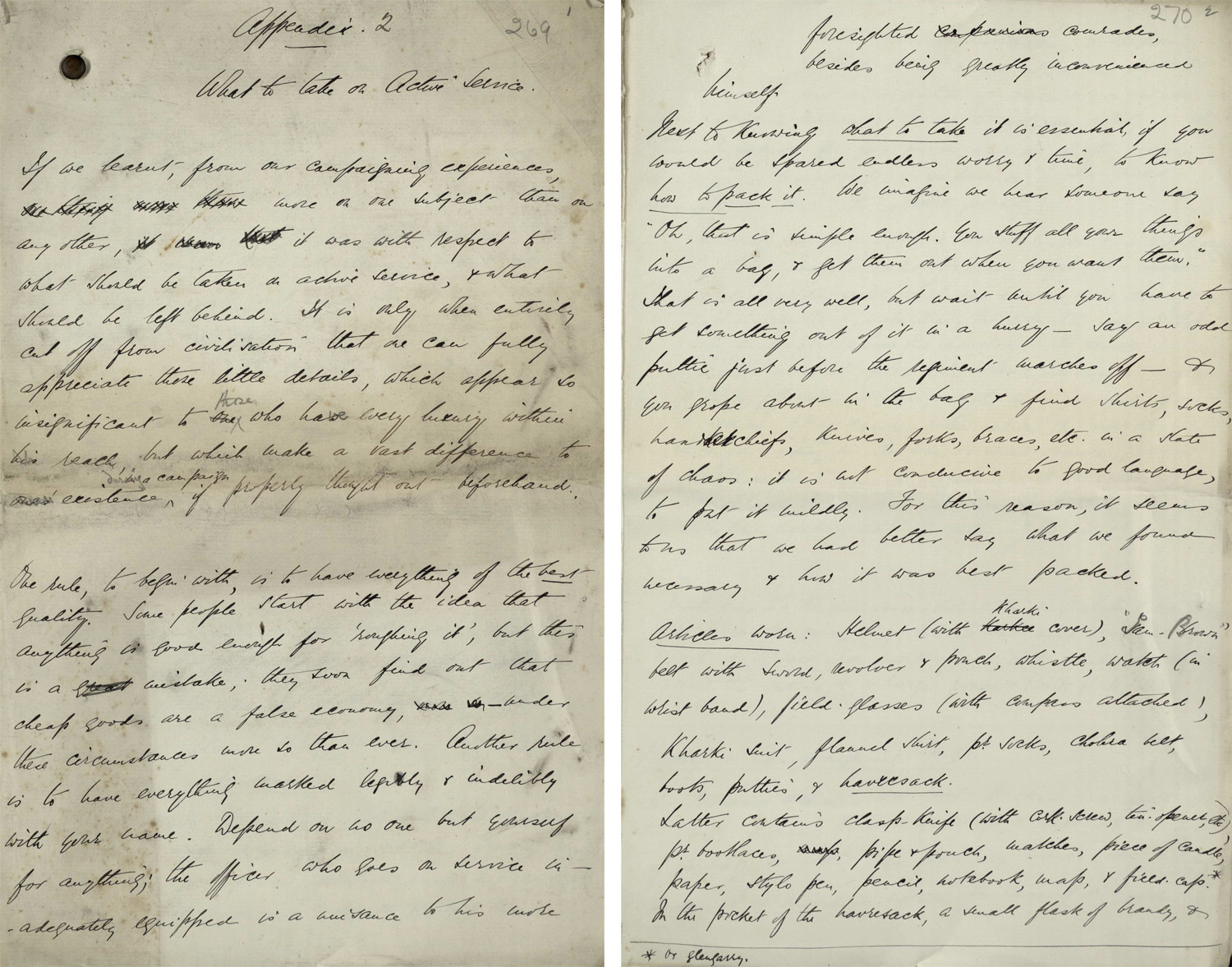
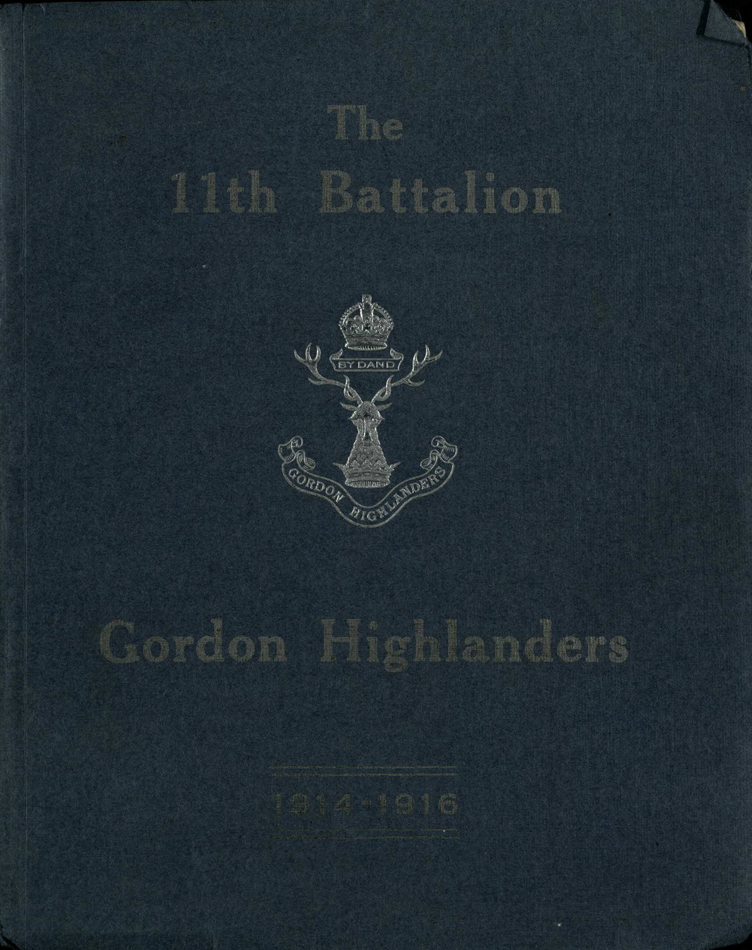
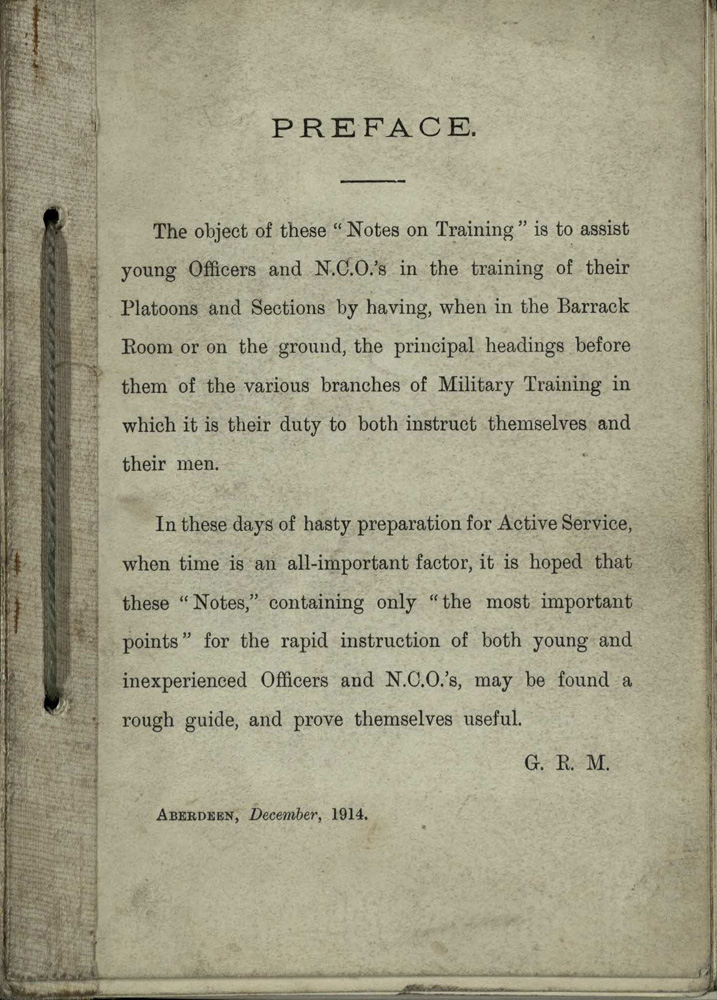
The items sit with papers relating to the Gordon Highlanders in World War I. These include ‘How to Organise and Administer a Battalion, 1916’ and ‘Training Notes for Officers’. According to Alford’s own history of his battalion (1914-16) (published with a roll of honour and roll of service), before the outbreak of war there were 4 territorial battalions of the Gordon Highlanders in Aberdeenshire – the 4th, 5th, 6th and 7th. The huge response to the recruiting efforts of August and September 1914 raised three more battalions as part of ‘Kitchener’s Army’. The 11th (Service) Battalion Gordon Highlanders was formed under Lt-Col Alford on 28 November 1914. It acted first as a service, then as a training battalion. On 1 September 1916 it converted into 42nd Training Reserve Battalion of 9th Reserve Brigade of the Gordon Highlanders at Bridge of Allan, and became the 53rd (Young Soldier) Battalion in October 1917, part of the Lowland Reserve Brigade.
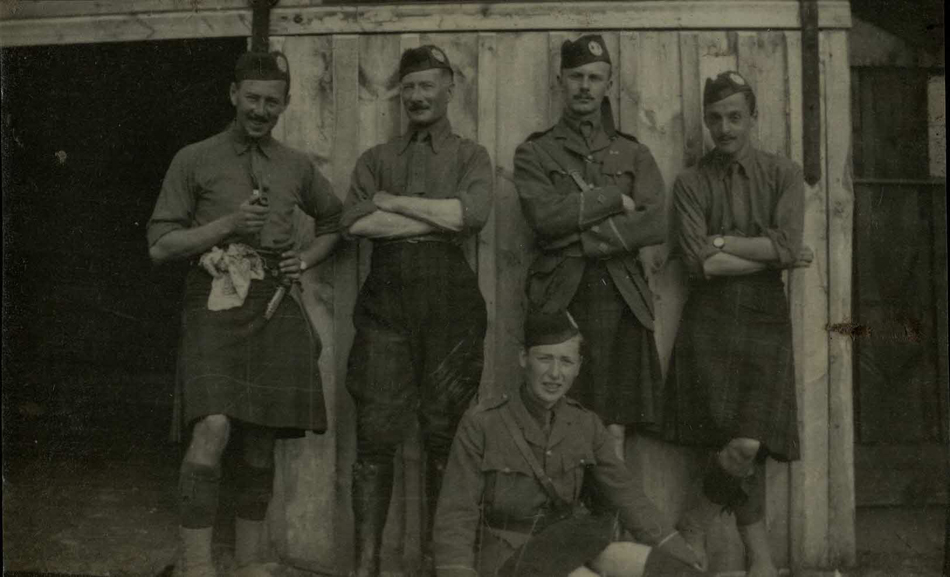
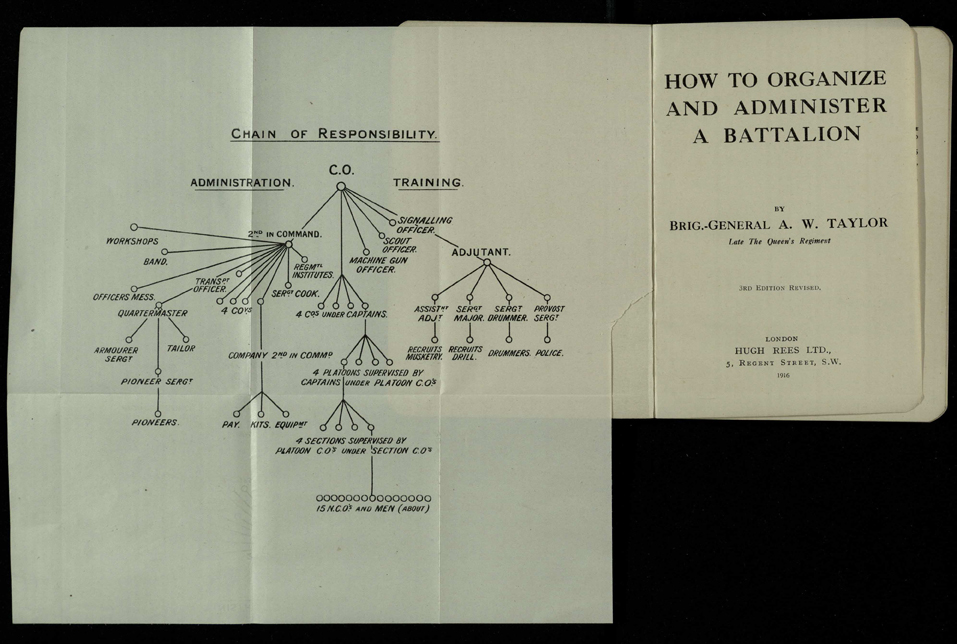
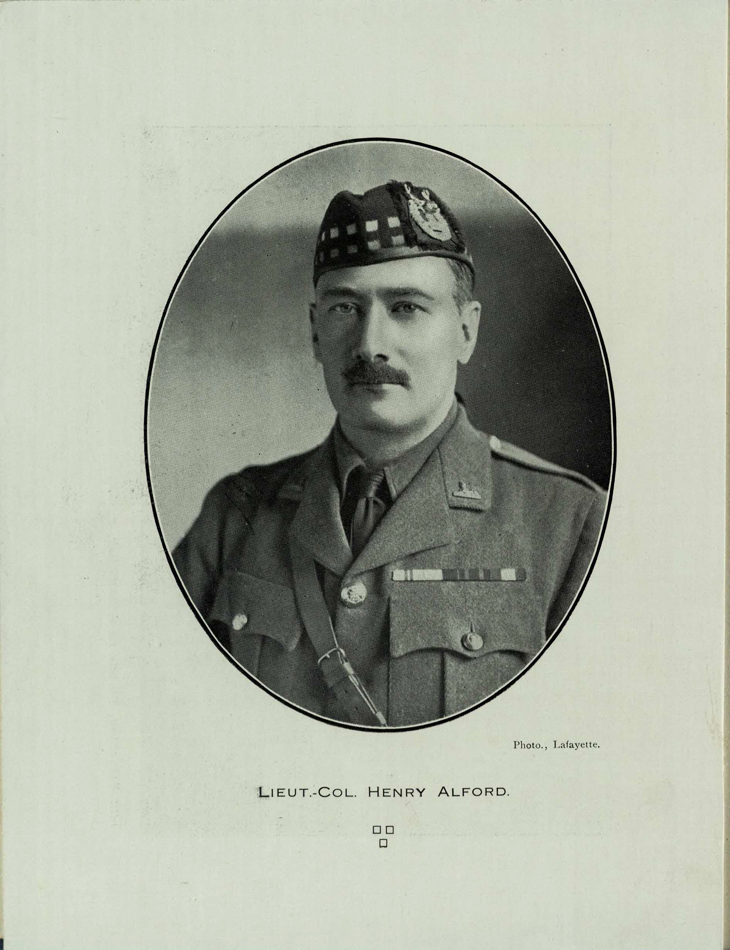
Alford (1870-1955) was educated at Harrow and Sandhurst, commissioned in October 1893 and served in the Sudan Campaign of 1896 and the South African War of 1899-1901, where he was with the 2nd Btn Royal Scots Fusiliers at the relief of Ladysmith. He was gazetted Captain in 1901 and moved to the 3rd Cameron Highlanders in 1904, the same year that he was made a member of the Royal Company of Archers (HM Bodyguard for Scotland). He played a part in the Mexican Revolution of 1910. The War Office promised him officers and men of the 3rd Gordon Highlanders to start his new battalion in 1914.
‘What to take on active service’ is undated, but seems to be based on Alford’s experiences in ‘the Soudan’ and Egypt. He paints a rather gentlemanly, almost pleasant picture of life in a dry desert climate. He advised focus on little details “which make a vast difference to existence during a campaign if properly thought out beforehand.” Alford stresses self-reliance,
Depend on no-one but yourself for anything; the officer who goes on service inadequately equipped is a nuisance to his more foresighted comrades, besides being greatly inconvenienced himself,
and the need for careful organisation of one’s kit,
if you would be spared endless worry and time.
However, he advises that officers limit the amount of extra items they take as they may have to leave it behind, and the men will become discontented through the extra work involved in its transportation.
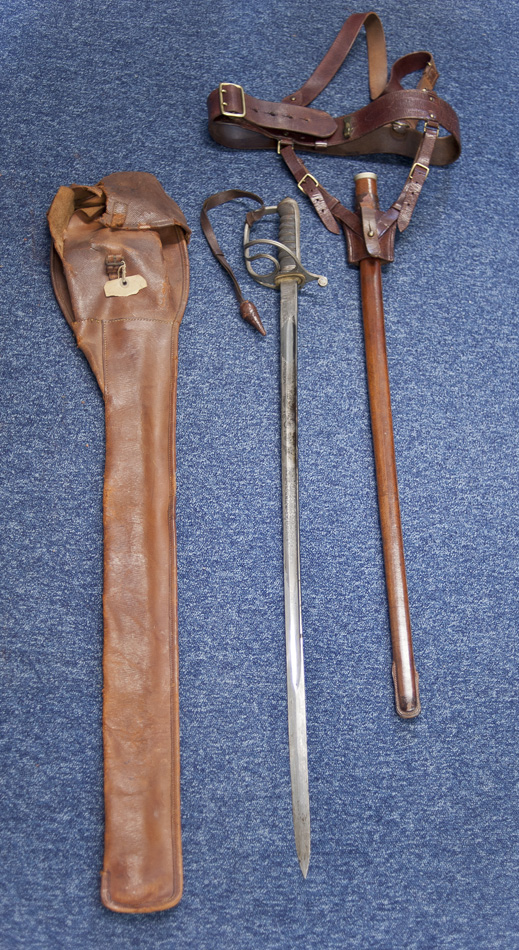
Alford starts by listing the articles to be worn – helmet, ‘Sam-Brown’ belt with sword, revolver and pouch, whistle, watch (in wrist-band), field glasses with compass attached, khaki suit, flannel shirt, pair of socks, cholera belt, boots, puttees and haversack. We didn’t attempt to collect these items – although Jane did bring in her father’s sword: It belonged to Lt Col H F W Fox MBE BA of the Royal Regiment of Artillery, which he joined in 1937, when some artillery regiments still used horses to draw big guns. Because of this a cavalry sword was commissioned for him by his mother and father from Wilkinson Sword. It was ‘made to measure’ to fit Fox’s height and leg length, and was never used in combat, just on ceremonial occasions. It still has the leather harness for wearing the sword and a leather case for travelling.
Alford describes the ideal contents of the officer’s haversack, campaigning bag, small canvas bag and leather case, and suggests additional items which could be taken, such as extra boots and water-bottle, water filter and portable canvas bucket. He even includes luxuries such as a solar topee, riding breeches, changes of clothes, cleaning materials, books, writing case, drawing and scientific instruments, campstool and table, camp bed, banjo and bath!
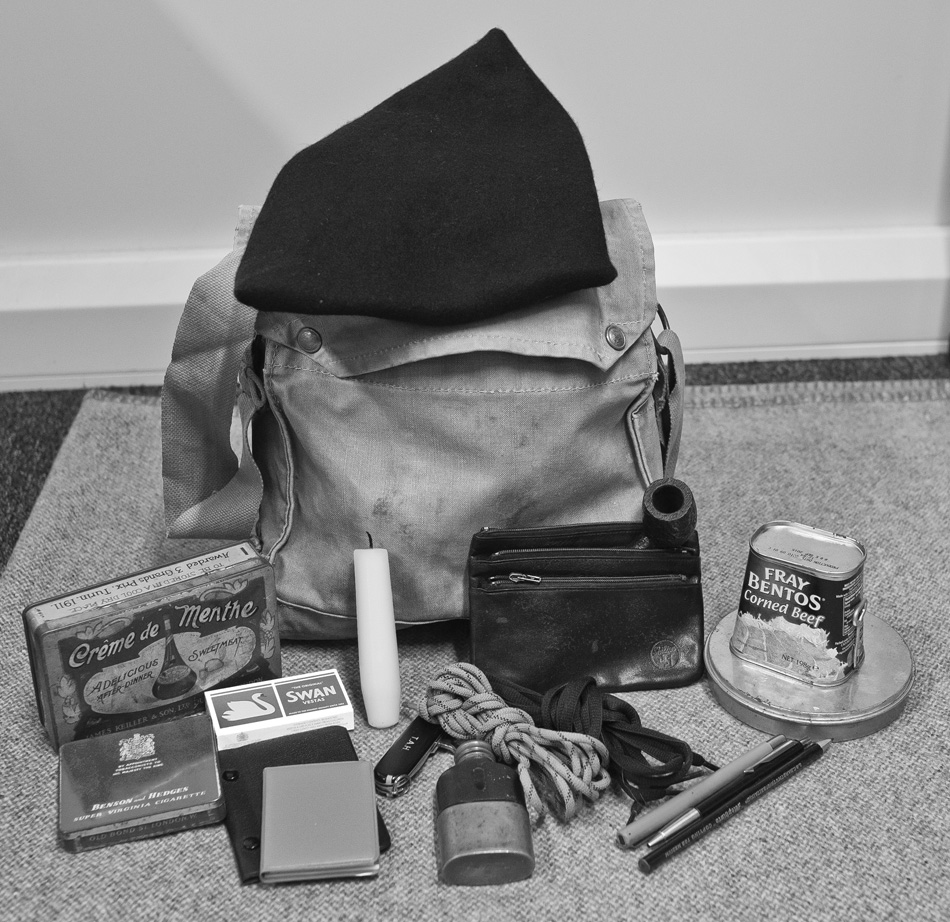
We assembled the contents of the haversack: clasp knife with corkscrew, tin opener etc., bootlaces, pipe and pouch, matches, piece of candle, paper, stylo-pen, pen, pencil, notebook, map and field cap or glengarry, flask of brandy, and rations. We couldn’t provide the extra revolver cartridges but added a couple of extra items.
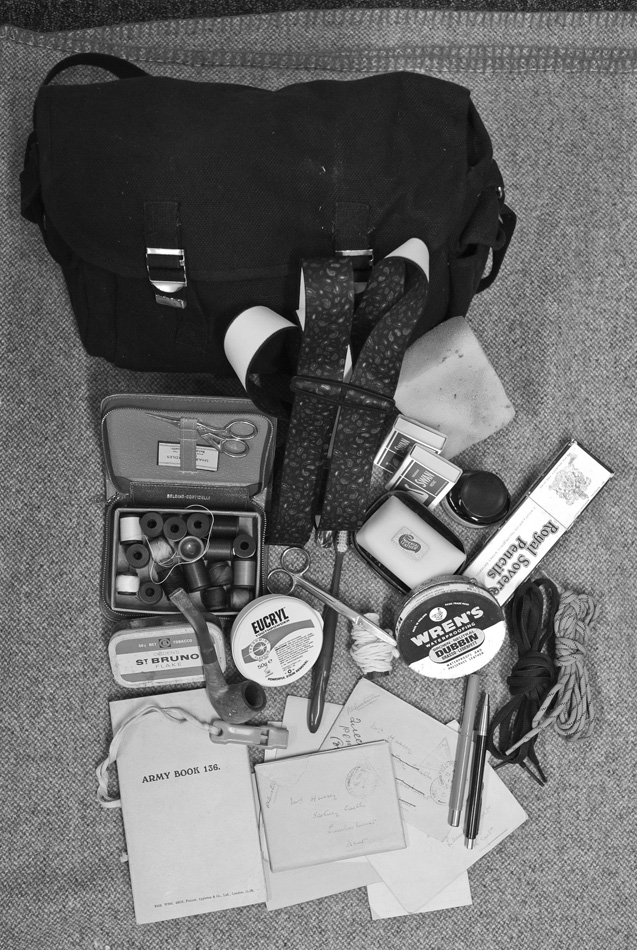
Our small canvas bag contains a housewife (or hussif – sewing kit), dubbin, string, pens, pencils, ink pot, cartridges and cleaner, matches, soap, laces, tobacco, paper, stationery, toothpowder, a spare pipe, whistle, scissors, braces and a sponge. This pack was much easier to reconstruct – but we still didn’t have the cartridges and cleaner! We gave our officer a toothbrush and added some real letters home and a genuine army notebook.
Our officer’s leather case was made up with some of the extras listed by Alford. These included a large leather belt, knife, pipe case, tobacco, Vaseline and ‘some pills’, a pocket book, books, writing case, sketching and mapping instruments, coloured chalks and a gun (imitation Luger made by Kirsty’s dad). The stars of this photo are the original Royal Engineers field note book, map of the Pas de Calais from 1915, engineer’s drawing box and stationery kit from the papers of the Anstruther family of Balcaskie (msdep121).
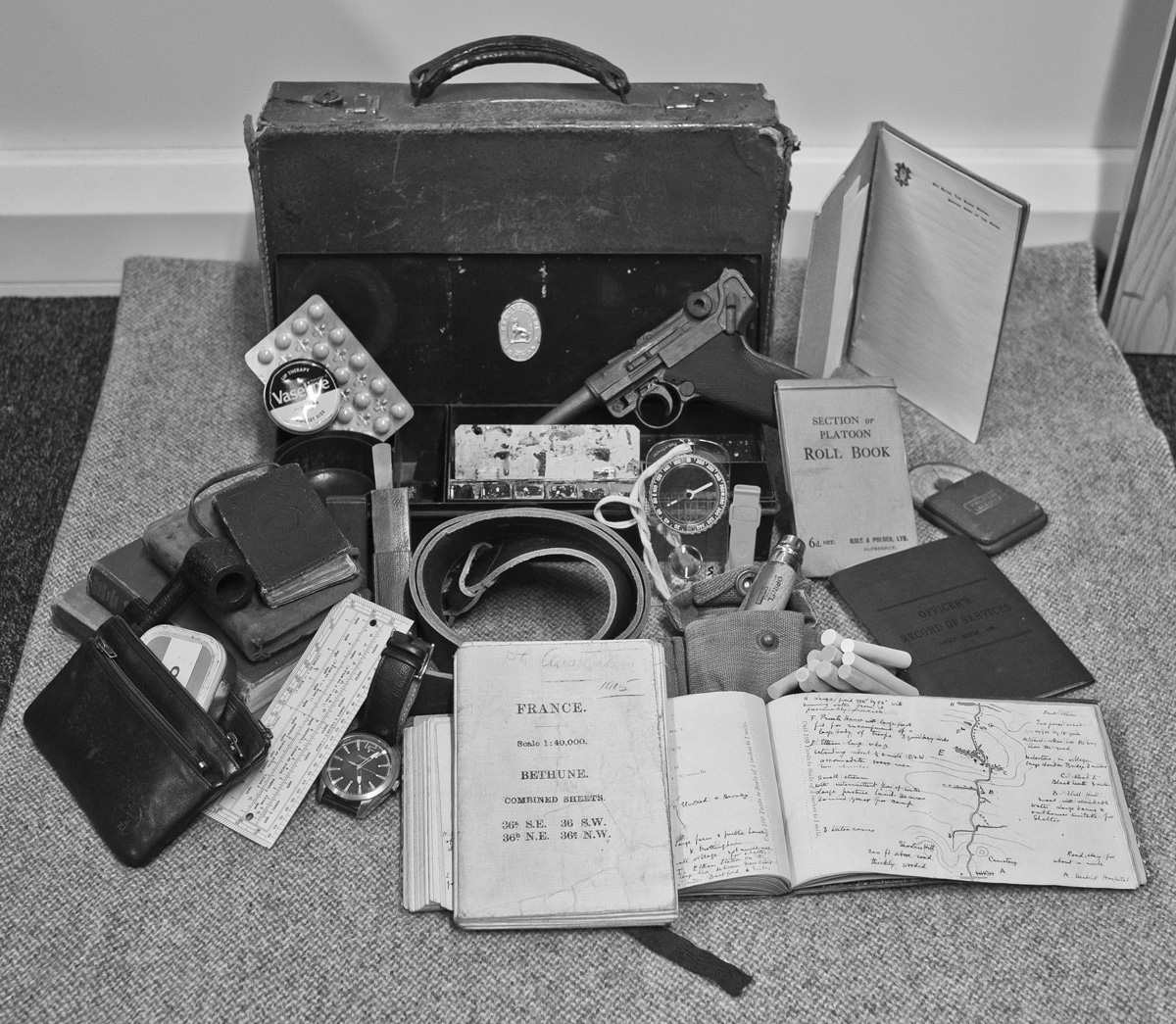
Alford notes that the luggage allowance for junior officers in the field was 40lbs. This is interesting phrasing, rather reminiscent of today’s airports, rather than the barely manageable packs of the infantryman who marched to the Western Front:
Our packs I cannot find words to describe. It is a cruel, unnatural weight that no man should be called upon to carry
(Lance Corporal Roland Mountfort, 10th Btn Royal Fusiliers quoted in Tommy Goes to War p 56.).
Those Gordon Highlanders whom Alford was training from 1914 “were being recruited faster than they could be armed, clothed and equipped. At first they wore ‘the blue emergency’ clothing, an ugly dress which had been made in apparently inexhaustible quantities somewhere about 1893”. There was a limited quantity of khaki, only drill purpose rifles and they didn’t get their first kilts until February 1915.
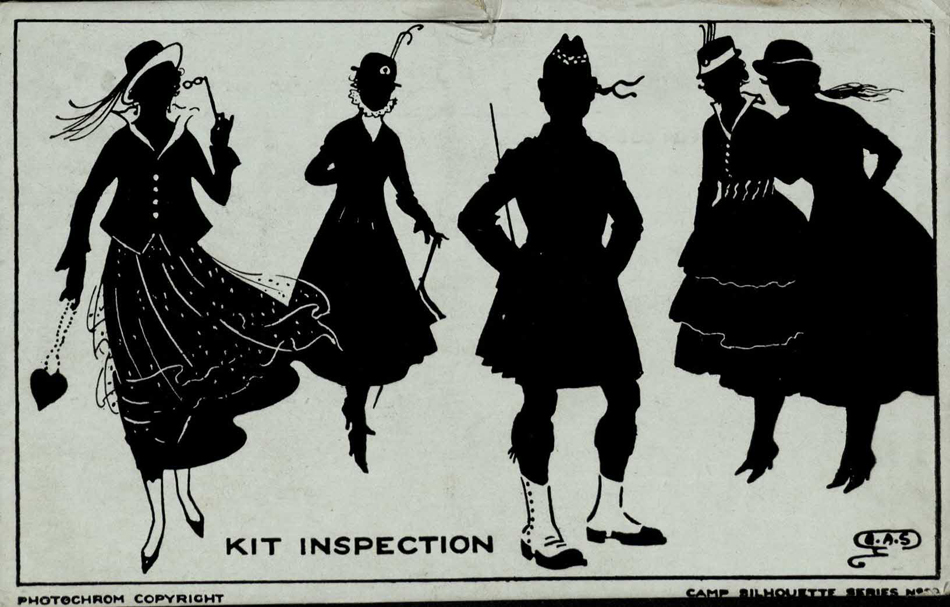
Once sent to the Western front the British Tommy (infantryman) was issued with a range of equipment suitable for trench warfare, including a tin helmet (introduced in 1915), gas mask, bayonet, entrenching tool and rifle. Our final reconstruction of the full soldier’s pack shows the results of a week of searching at home by members of the Special Collections team and their families! Sadly Eddie had to add the Lee Enfield Rifle with Photoshop, but that was the only electronic tweak to the photograph – we did have a genuine WWI pull through. The braces are a bit too beautiful, our shaving gear was too modern and we didn’t have enough brushes. Also you may notice that our soldier has 2 sizes of boots! Many thanks to the Special Collections team and their families for lending all the items to be photographed.
There are lots of stories of World War I to be uncovered from previously hidden resources in our collections, so we hope to do more blog posts to bring these to light over the coming months. Watch out for: letters home; a father’s diary; nursing at home and at the front; gas; the University’s war; war memorials; Haig’s chaplain and many more!
RH
Reconstruction photographs by Eddie Martin.
Posted on Behalf of Kenneth: "I was most impressed with the way in which the Special Collections staff managed to produce a set of counterparts of the equipment of a soldier of the First World War. I suppose the OTC might still have a Lee-Enfield rifle lying around somewhere. When I was in the Army Cadets in the late 50s we used Lee-Enfields of that date (but they were de-activated, and prudently without bayonets!) In terms of future WWI exhibitions, I expect you know that the Map Collection includes several detailed trench maps of parts of the front line. One of them still had traces of the mud of the trenches on it. There are also some aerial photographs from the same region (they both have grid references which can still be understood by experts). There is also a German small-scale map of Belgium which was presented by the late Mr. William Muir, a St. Andrews alumnus, who told me he had rescued it from a German dugout on the day of the Armistice." Thanks, Ken for the interest in the post and for this extra information - we will add it to the library guide on sources of the First World War which is nearing completion. Rachel
[…] to understand what enlisting entailed, how the soldier prepared for war (see our earlier post at https://standrewsrarebooks.wordpress.com/2014/02/20/52-weeks-of-historical-how-tos-week-17-how-to-pa…) and how they were trained before being sent to serve overseas. And alongside this we can’t avoid […]